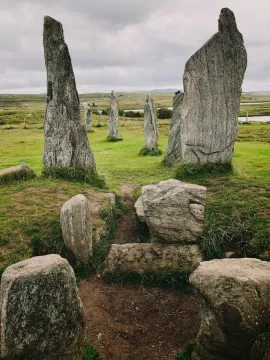Celtic symbols: history, meaning and culture

Celtic symbols are one of the most fascinating manifestations of ancient Celtic culture, a civilization that flourished in Western Europe over 2,000 years ago. Known for their deep spirituality, intricate artistic creations, and respect for nature, the Celts left a cultural legacy that still lives on in countries such as Ireland, Scotland, and Wales. In this blog, we will explore some of the most important Celtic symbols, their history and meaning, and their relevance today.
History of Celtic culture
Before we delve into the symbols, it is important to understand who the Celts were and what made them so unique. The Celts were a group of people who inhabited much of Europe, from the Iberian Peninsula to the British Isles and western Asia Minor. They were not a unified empire but were organized into independent tribes but shared a common language, culture, and religion.
The Celts were known for their martial arts, but also for their devotion to nature and spiritual beliefs. They believed that everything in the world, whether a river, a tree or a mountain, had a spirit and a special meaning. This deep connection to nature and the spiritual world is reflected in their symbols, which often include geometric shapes and natural patterns.
The most famous Celtic symbols.
- The Trisquel or Triskelion
One of the oldest and best-known symbols of Celtic culture is the triskelion , a pattern of three intertwined spirals. There are several interpretations of this symbol, but one of the most common is that it represents the eternal cycle of life, death and rebirth. It is also associated with the balance between body, mind and soul or even with the three phases of woman (maiden, mother and crone) in Celtic mythology.
The number three was sacred to the Celts, so the triskelion is considered a symbol of perfection and wholeness. Additionally, spirals that spiral outward can also symbolize growth, expansion, and progress toward greater wisdom and understanding.
- The Celtic Cross
The Celtic cross is one of the most famous and recognizable symbols. It combines the traditional Christian cross with a circle surrounding it, giving it both Christian and pagan meaning. In Christianity, the cross represents faith and salvation, while the circle symbolizes eternity and the circle of life.
However, the Celtic cross also has its roots in pagan Celtic religion. Before the arrival of Christianity, the circle was a symbol of the sun and solar deities. It is believed that by adapting this symbol, Christian missionaries were able to integrate aspects of the ancient Celtic religion into the new Christian message, thus facilitating the conversion of the Celts to Christianity.
- The Tree of Life (Crann Bethadh)
The tree of life is a central symbol in many ancient cultures, but it has a particularly strong meaning in Celtic tradition. The Celts viewed trees as sacred beings that connected heaven, earth, and the underworld. The Crann Bethadh or Tree of Life symbolizes this connection between all forms of life and represents harmony and balance in nature.
Furthermore, the tree of life was a symbol of longevity, strength and wisdom. Celtic tribes used to plant a tree in the centre of their villages as a landmark and symbol of protection. If the central tree was cut down, it was considered a bad omen for the trunk.
- The Celtic knot
Celtic knots are endless, interlocking patterns that have no beginning or end and symbolize eternity and continuity. These knots often decorate objects, weapons, jewelry, and manuscripts, such as the famous Book of Kells . Although there are many Celtic knot patterns, they all share the same message of unity and connection.
The love knot is one of the most popular knots and symbolizes the eternal connection between two people. In Celtic tradition, love was not just a feeling, but a deep spiritual connection that transcended time and space. This knot, with its intricate weaving, reflects this unbreakable connection.
The relevance of Celtic symbols today.
Although Celtic civilization disappeared centuries ago, its symbols are still relevant today, not only in Ireland and the British Isles, but all over the world. These symbols have transcended time and adapted to modernity, finding their place in jewelry, art, tattoos and contemporary fashion.
Furthermore, many principles and beliefs associated with Celtic symbols, such as respect for nature, balance, and the connection between all forms of life, reflect modern values of sustainability and spirituality. The rich Celtic symbolism continues to inspire those seeking to better understand themselves and the world around them.
Diploma
Celtic symbols are much more than just artistic decorations; they are deep representations of spirituality, nature, and connection. Through figures such as the triskele, the tree of life, and Celtic knots, the Celts expressed their understanding of the eternal cycle of life, the importance of balance, and the interconnectedness of all things.
Today, these symbols remain a source of inspiration and reflection, reminding us of the wisdom of the Celtic ancestors and their deep connection with nature. If you ever visit Ireland or Scotland, keep an eye out for these ancient symbols, as they will connect you to a rich heritage that has endured through the centuries.